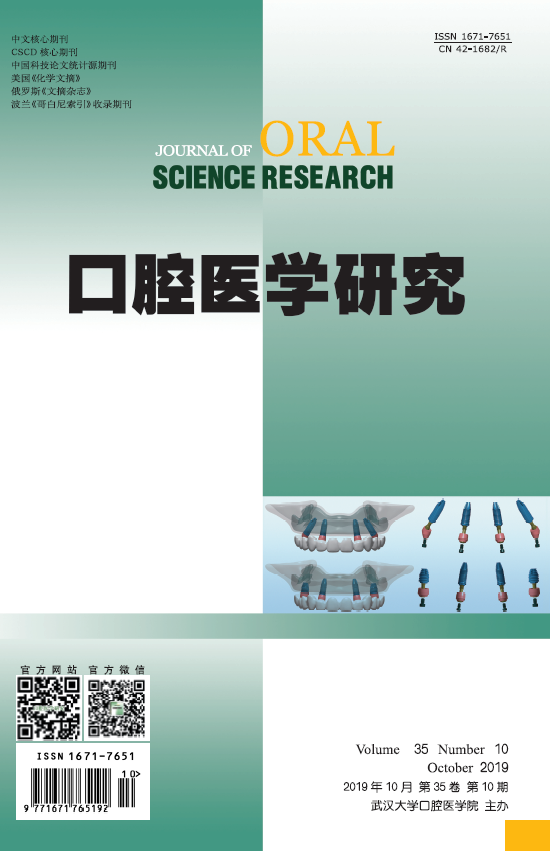|
|
Expression and Significance of Beclin1 and Apoptosis Related Proteins in Oral Carcinogenesis
SUN Weike, WANG Peiyuan, LIU Wei, WANG Xia
2019, 35(10):
979-983.
DOI: 10.13701/j.cnki.kqyxyj.2019.10.017
Objective: To study the clinical significance of Beclin1 and its relationship with bcl-2, survivin, and bax in oral carcinogenesis. Methods: Immunohistochemical SP method was used to detect the expression of Beclin1, bcl-2, survivin, and bax in oral carcinogenesis tissues including oral cancer (60 cases), oral dysplasia (48 cases), and normal oral mucosa (60 cases), and to study the clinical significance of Beclin 1 in oral squamous cell carcinoma (OSCC) and its relationship with bcl-2, survivin, and bax expression in oral carcinogenesis. Results: The expression of Beclin1 was significantly increased in OSCC and normal mucosa (65% and 75%, respectively), and the positive expression rate in dysplasia significantly decreased (54.2%, P<0.05). Survivin and bcl-2 expression were higher in OSCC (73.33% and 70%) than in dysplasia and normal mucosa (P<0.05); the expression rate of bax increased in dysplasia than OSCC and normal mucosa (P<0.05). Beclin1, bcl-2, survivin, and bax expression was closely related to diameter of tumor and lymph node metastasis (P<0.05). The expression of Beclin1 was closely related to bcl-2, survivin, and bax (P<0.05; r=0.421, 0.367 and 0.542) in OSCC. Conclusion: Autophagy and apoptosis were involved in oral carcinogenesis, and were associated with invasion and metastasis of oral cancer, which synergistically participated in the development of oral cancer
References |
Related Articles |
Metrics
|

